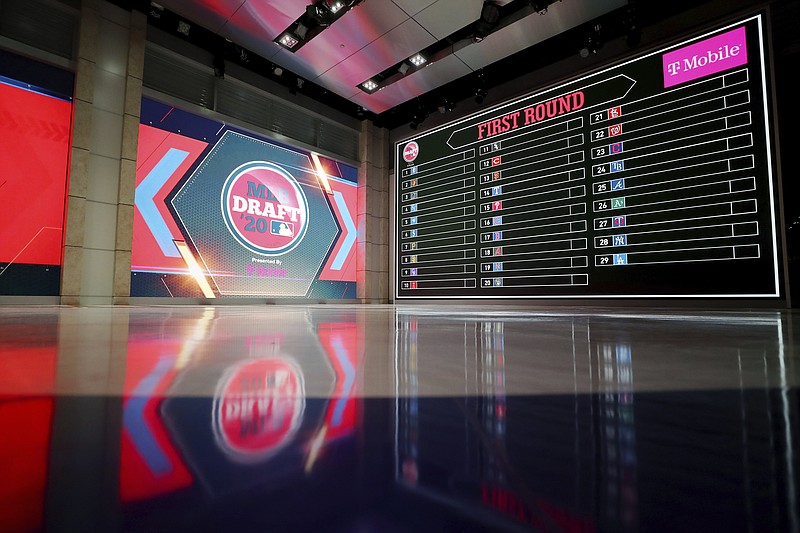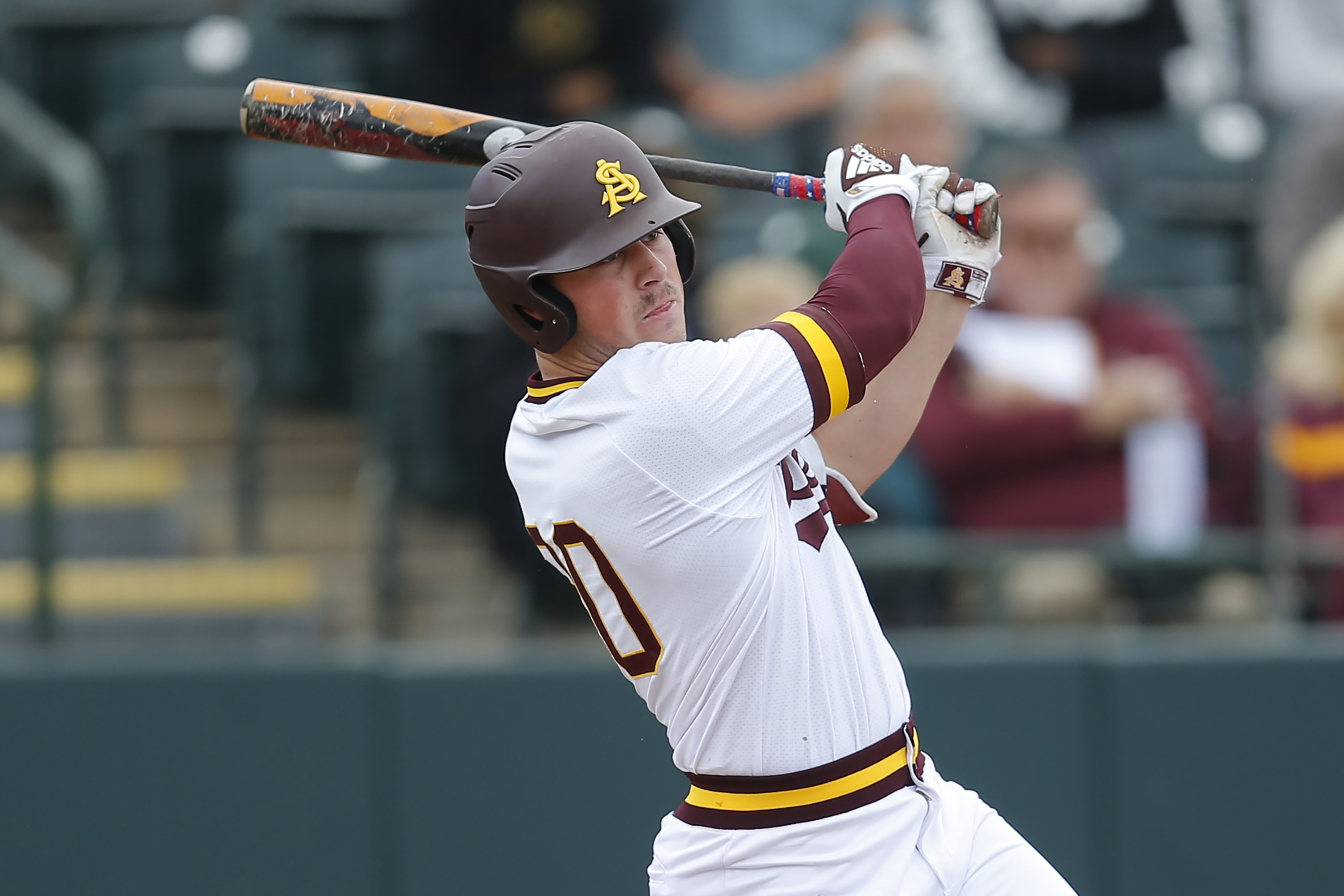NEW YORK - Spencer Torkelson slugged his way through college, bashing baseballs all around the country with eye-popping power.
All those impressive drives made the decision easy for the Detroit Tigers, who selected the Arizona State star with the No. 1 pick in the Major League Baseball amateur draft Wednesday night.
However, while Torkelson was long considered the favorite to go first overall, the surprise came when he was announced as a third baseman by commissioner Rob Manfred. Detroit plans to move Torkelson to the hot corner from first base, where he played for the Sun Devils.
"It shows the amount of respect they have for me as an athlete," a smiling Torkelson said on the MLB Network broadcast. "I'll take it and run with it. I like to label myself as a baseball player, and you give me a bat, a ball and a glove, and you know what? I'm just going to want to win."
Arkansas outfielder Heston Kjerstad went No. 2 overall to the Baltimore Orioles, which took Oregon State catcher Adley Rutschman with the top pick a year ago.
After having the worst record in the majors last season, Detroit opened the draft for the second time in three years. The Tigers took Auburn right-handed pitcher Casey Mize in 2018, and now they've got a powerful bat that could anchor their lineup for years to go along with an arm they hope is a future ace.
With power to all fields and a great eye at the plate, the 6-foot-1, 220-pound Torkelson established himself as college baseball's top slugger after going undrafted out of high school. He hit 54 home runs at Arizona State, two shy of the school record set by Bob Horner - another infielder who was drafted No. 1 overall by the Atlanta Braves in 1978.
Torkelson likely would have obliterated that mark if his college season hadn't been stopped after just 17 games because of the coronavirus pandemic. The Petaluma, California, native hit .340 with six homers and 11 RBIs this year.
"We know he can play first. But our scouts strongly feel that he can play third base, and that's our intent at this point," Detroit general manager Al Avila said on the ESPN broadcast. "He's exactly the type of player we hoped would be there for us to get with the top pick. Obviously, he's one of the most productive hitters in college history."
This year's draft originally was scheduled to take place for the first time in Omaha, Nebraska, as a lead-in to the College World Series. Instead, the COVID-19 outbreak caused MLB to make some drastic changes, including holding the draft remotely - much like the NFL did in April - and shortening it from three days with 40 rounds to only two days and five rounds.
Manfred announced the first-round selections as usual from a podium at MLB Network studios in Secaucus, New Jersey. He also addressed racial injustice and the recent protests that have occurred all over the country and the world since the death of George Floyd in Minneapolis.
Executives from all 30 teams held up signs at the beginning of the broadcast that read: "Black Lives Matter. United For Change."
The shortened - and in some cases even canceled - college and high school baseball seasons presented unique challenges for MLB teams' scouting departments, which had to rely more on video of prospects instead of attending games to help with their evaluations.
Perhaps that contributed to a record seven straight college players being selected to begin the draft.
After Torkelson and Kjerstad were picked, the Miami Marlins took Minnesota right-hander Max Meyer; the Kansas City Royals selected Texas A&M lefty Asa Lacy; the Toronto Blue Jays went with Vanderbilt shortstop Austin Martin; the Seattle Mariners chose Georgia righty Emerson Hancock; and the Pittsburgh Pirates picked New Mexico State shortstop Nick Gonzales.
Tennessee high school outfielder Robert Hassell, who is from Franklin and played for Independence in Thompson's Station, ended the run on college players, going No. 8 to the San Diego Padres.
"We've seen the trend in this direction over the last number of years," Milwaukee Brewers scouting director Tod Johnson said after the team took UCLA outfielder Garrett Mitchell at No. 20. "Those three years of development that players get when they go to college tells us a lot about them. It helps to make these decisions with more information. We have more of a statistical record for college players against quality competition.
"All those factors, I think, have trended toward moving toward a more college-heavy draft."
Florida high school outfielder Zac Veen was chosen by the Colorado Rockies with the ninth pick, followed by the Los Angeles Angels selecting Louisville lefty Reid Detmers to round out the top 10.
Tennessee Volunteers lefty Garrett Crochet gave the Southeastern Conference five of the first 11 picks when he was selected by the Chicago White Sox. Nine SEC players in all were picked Wednesday.
The Tampa Bay Rays took Arizona State shortstop Alika Williams - a college teammate of Torkelson's - with the final pick of the first night at No. 37 overall.
Rounds 2-5 will be held Thursday, for a total of 160 players selected.
Torkelson became the fourth Arizona State player selected first overall, most of any school. He joined Horner, left-hander Floyd Bannister (1976) and outfielder Rick Monday, who was the top pick in baseball's inaugural June amateur draft in 1965.
The Houston Astros will have to wait until pick No. 72 before making a selection after being stripped of their first- and second-round selections by Manfred as part of the team's punishment for breaking rules against using electronics to steal signs during games.
The Boston Red Sox lost their second-round pick for violating rules against in-game use of video to identify pitch signals.
Undrafted players need to wait until Sunday before they can sign with MLB teams, which can offer signing bonuses only up to $20,000 as agreed upon by MLB and the players' union.

